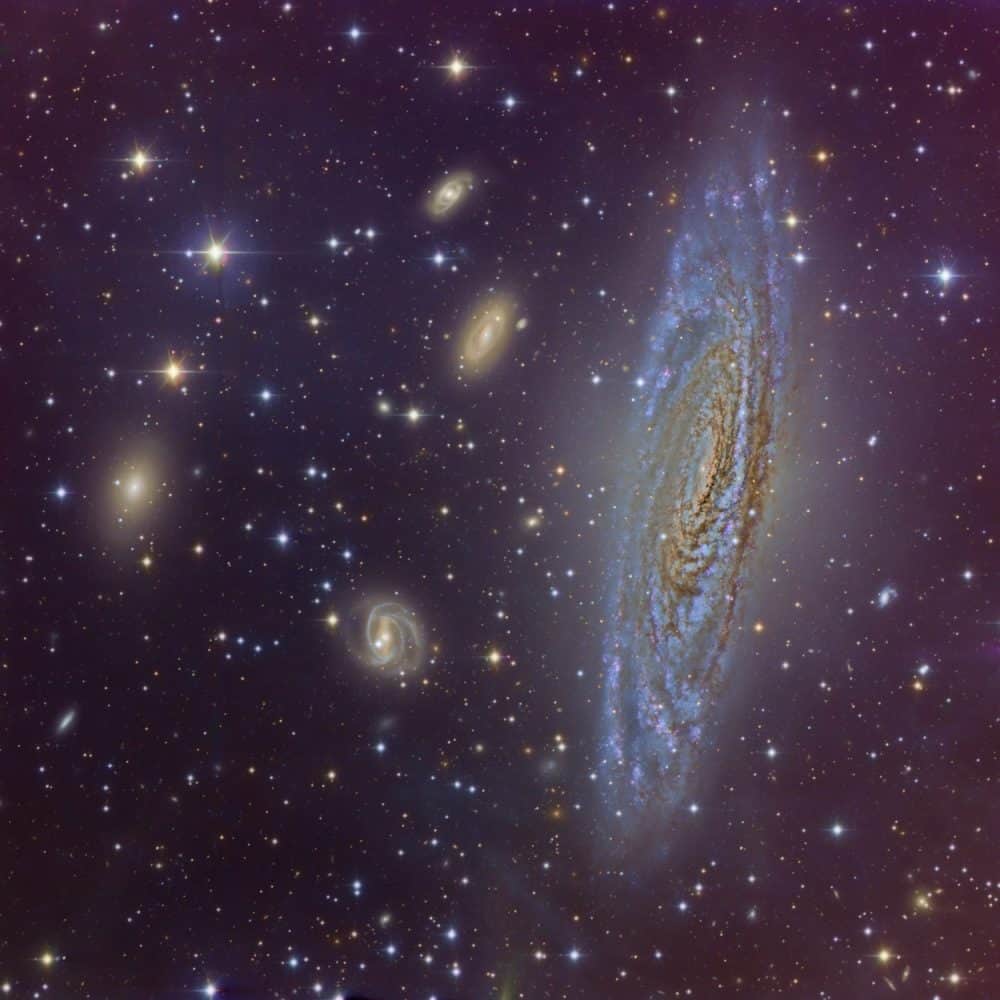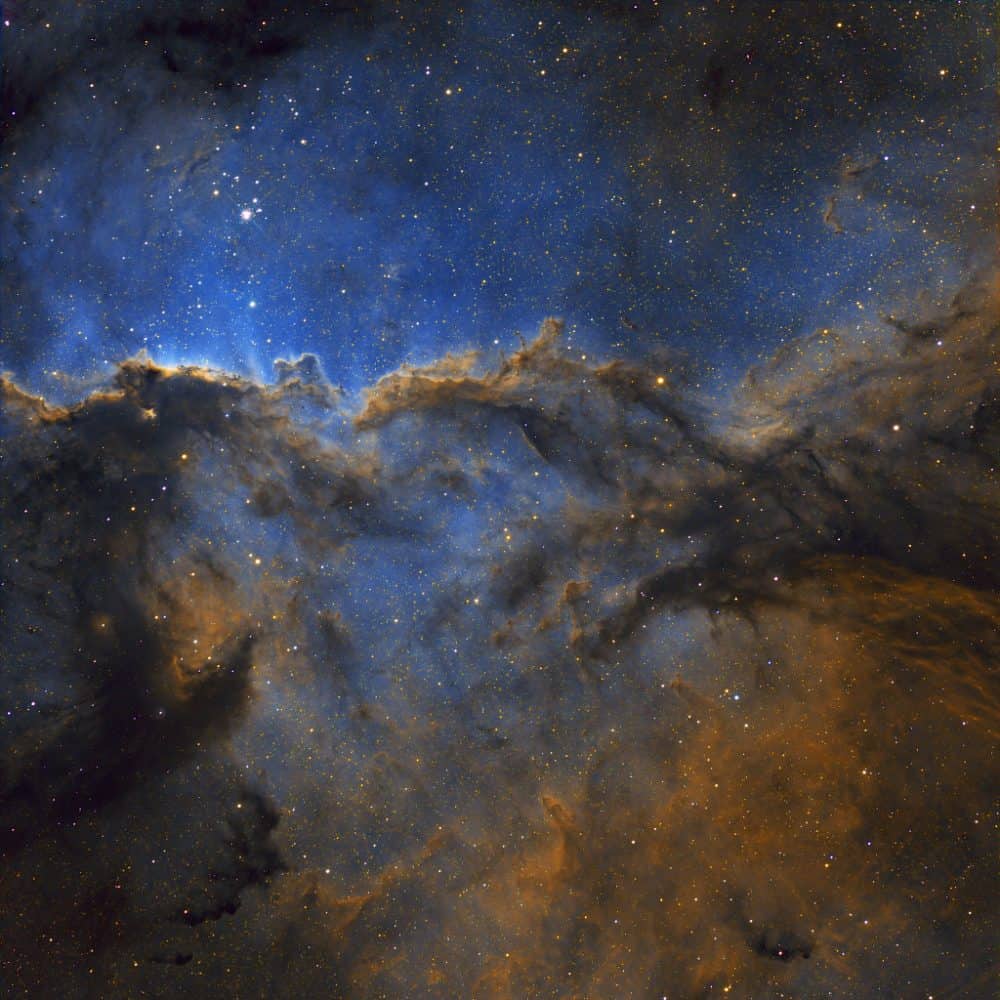Blog
Wilbert Thirkield “Big Chief” Ellis (November 10, 1914 – December 20, 1977) was an American blues pianist and vocalist.
Ellis was born in Birmingham, Alabama, United States, and was an autodidact at piano. He played at local parties and dances in the late 1920s before leaving Alabama, traveling the United States and working odd jobs. He served in the Army from 1939 to 1942, then moved to New York, where he accompanied touring blues performers for their concerts in the city. He recorded with Lenox Records in 1945, and recorded for Capitol Records with Sonny Terry and Brownie McGhee in the 1950s.
In 1972, Ellis moved to Washington, D.C., where he operated a liquor store. Towards the end of his life, Ellis began recording for Trix Records, where he played again with McGhee as well as Tarheel Slim and John Cephas.
Ellis died in Birmingham, Alabama, of heart failure aged 63.
more...Hyman Paul Bley, CM (November 10, 1932 – January 3, 2016) was a Canadian pianist known for his contributions to the free jazz movement of the 1960s as well as his innovations and influence on trio playing and his early live performance on the Moog and Arp audio synthesizers. Bley was a long-time resident of the United States. His music has been described by Ben Ratliff of the New York Times as “deeply original and aesthetically aggressive.” Bley’s prolific output includes influential recordings from the 1950s through to his solo piano records of the 2000s.
Bley was born in Montreal, Quebec, on November 10, 1932. His adoptive parents were Betty Marcovitch, an immigrant from Romania, and Joe Bley, owner of an embroidery factory. However, in 1993 a relative from the New York branch of the Bley family walked into Sweet Basil in NYC and informed him that his father was actually his biological parent. At age five Bley studied violin, but at age seven he decided to switch to the piano. By eleven he received a junior diploma from the McGill Conservatory in Montreal. At thirteen he formed a band which played at summer resorts in Ste. Agathe, Quebec. As a teenager he played with touring American bands, including Al Cowan’s Tramp Band. In 1949, when Bley was starting his senior year of high school, Oscar Peterson asked Bley to fulfill his contract at the Alberta Lounge in Montreal. The next year Bley left Montreal for New York City and Juilliard.
https://www.youtube.com/watch?v=9SaLBmLsc4o
more...NGC 7331 (also known as Caldwell 30) is an unbarred spiral galaxy about 40 million light-years (12 Mpc) away in the constellation Pegasus. It was discovered by William Herschel in 1784. NGC 7331 is the brightest member of the NGC 7331 Group of galaxies. The other members of the group are the lenticular or unbarred spirals NGC 7335 and 7336, the barred spiral galaxy NGC 7337 and the elliptical galaxy NGC 7340. These galaxies lie at distances of approximately 332, 365, 348 and 294 million light years, respectively. In both visible light and infrared photos of the NGC 7331, the core of the galaxy appears to be slightly off-center, with one side of the disk appearing to extend further away from the core than the opposite side.
The galaxy is similar in size and structure to the Milky Way, and is often referred to as “the Milky Way’s twin”. However, discoveries in the 2000s regarding the structure of the Milky Way may call this similarity into doubt, particularly because the latter is now believed to be a barred spiral, compared to the unbarred status of NGC 7331.
more...Jazz drummer who has featured with bassists Stanley Clarke and John Lee and is an ex-member of Chick Corea’s Return To Forever. He has also worked with a number of diverse artists such as Marvin Gaye, Roberta Flack, Phil Collins and Julee Cruise as well as holding the distinction of being Stevie Wonder’s touring drummer for a number of years.
Alfredo Remus is an Argentine musician, double bass player, performer of various genres of American popular music, especially tango , jazz , Argentine folklore and bossa nova . born 1938
He participated as bassist in the historical album the Misa Criolla ( 1964 ), by Ariel Ramírez . He has accompanied important musicians and groups such as Paul Gonsalves , Vinícius de Moraes , Maria Bethânia , Enrique “Mono” Villegas , Gato Barbieri , Mercedes Sosa , Tony Bennett, Ariel Ramírez , Víctor Heredia , Alberto Cortez , Trio Los Panchos , Raphael , Zupay Quartet , Dyango , Leonardo Favio , Sandro , Susana Rinaldi , Antonio Carlos Jobim , among others.
He was a frequent participant in a series of meetings of improvisation and informal folk experimentation at Eduardo Lagos’ house, baptized humorously by Hugo Díaz as folklorisons , which, like jazz jam sessions , used to gather Lagos, Astor Piazzolla and Díaz, with other musicians such as Remus himself, Oscar Cardozo Ocampo , Domingo Cura and Oscar López Ruiz , among others.
more...World Music on Flamenco Fridays with Cameron
From the film Tirititando de Frío
An interesting counting method has been used by Pepe Romero, in his book Classical Guitar Style and Technique, which is 2 measures of 3
4 time followed by 3 measures of 2
4 time. This puts the emphasis on the last beat of each measure:
It is played at about 240 beats per minute, most commonly in an A-phrygian mode, with a sharpened third to make A major the root chord. A typical rasgueado (a strumming pattern that sets the rhythm) involves only the A and B♭ chords as follows:
In a dense swampland in Georgia, just north of the Florida border, you find the headwaters of the Suwannee River. The Suwannee is known as a “blackwater river” because of its dark-brown waters laden with organic material. This river system has been called one of the most pristine in the United States, but some environmental pressures are putting that distinction in jeopardy.
Unlike other blackwater rivers, the Suwannee maintains its inky color along its entire 400-kilometer (250-mile) journey to the sea. When the river finally meets the Gulf of Mexico along Florida’s Big Bend—that portion of coast where the state’s panhandle curves to meet its peninsula—its dark waters act like a tracer, revealing whereby the river water mixes with the sea. That mixing was on display on February 20, 2015, when the Operational Land Imager on Landsat 8 captured this view.
The image above was entered into NC State’s Envisioning Science image contest by Alice Alonso, a former research scientist in the university’s Biosystems Analytics Lab and now a researcher at the Université catholique de Louvain. As she described, the image “captures a large river discharge event, which resulted in a mesmerizing dark river plume contrasting with the deep blue color of the Gulf of Mexico.” It is, in effect, a testament to the freshwater contribution of the Suwannee River to the sea and an echo of the unique, swampy ecosystem.
more...Donald Byron (born November 8, 1958) is an American composer and multi-instrumentalist. He primarily plays clarinet, but has also used bass clarinet and saxophones.
Though rooted in jazz, Byron’s music is stylistically eclectic. He has worked in many different musical genres, ranging from klezmer music and German lieder, to Raymond Scott‘s “cartoon-jazz,” hard rock/metal, and rap. Most of Byron’s albums have been conceptual, devoted to works of a particular musician and/or style of music.
Byron was born in The Bronx, in New York City. Both parents were musicians: his mother was a pianist and his father played bass in calypso bands. As well as listening to jazz recordings by Dizzy Gillespie, Miles Davis and others, he was exposed to other styles through trips to the ballet and symphony concerts.
more...Kenny Cox (November 8, 1940 – December 19, 2008) was a jazz pianist performing in the post bop, hard bop and bebop mediums. Cox was pianist for singer Etta Jones during the 1960s and was also a member of a quintet led by trombonist George Bohannon. By the end of the late 1960s he had formed his own Kenny Cox and the Contemporary Jazz Quintet, which recorded two albums for Blue Note Records before the end of the decade. Cox has appeared as a contributor on various albums, and has also performed live with such musicians as Rahsaan Roland Kirk, Eddie Harris, Jackie McLean, Roy Haynes, Ben Webster, Wes Montgomery, Kenny Dorham, Philly Joe Jones, Kenny Burrell, Donald Byrd, Roy Brooks, Charles McPherson, and Curtis Fuller. During the 1980s he formed the Detroit-based Guerilla Jam Band, a group which performed with Regina Carter, James Carter, Tani Tabbal, and Craig Taborn. Cox was responsible for the short-lived Strata Records.
more...
Warren Battiste was born in New Orleans in 1925 and was taught to play the guitar by his father who was a banjo player at Preservation Hall. Warren has performed at numerous jazz clubs on Bourbon Street, Preservation Hall, Snug Harbor, the Matador and many others. Warren also appeared in the film “Shy People” with Jill Clayburgh and Barbara Hershey. He has taught music at Wequachie High School, Essex County College and the Newark Art Center in Newark, New Jersey. Warren has performed with George Benson, The Platters, The Inkspots and Illinois Jacquet to name a few. In 2000 he received the Lifetime Achievement Award in Jazz from the New Orleans Jazz and Heritage Festival.
In 2001 he released his debut CD “Street Jazz” to rave reviews.
In 2004 he was backed by Nocturnal Records for a second CD entitled “Just Friends”.
In 2007 Progressive Records, a division of George Buck’s recording company in New Orleans, released a third CD entitled “Quiet Storm”.
WARREN BATTISTE BIO
BIRTHPLACE: New Orleans, Louisiana on November 8, 1925
EDUCATION: Father was a banjo player at Preservation Hall and the initial Instructor to young Warren. Later Warren completed 4 years of instructions at Gruenwald Music School in New Orleans.
INSTRUMENTS: Primary: Guitar
Others: Bass, Banjo, and Piano
EXPERIENCE:
Featured on Louisiana Jukebox May 2002 and September 20, 2002. Featured artist in UNO’s Jazz Series April 2002. Numerous jazz clubs around Bourbon Street in the French Quarter, Preservation Hall, Harrah’s Casino, Club 201, Snug Harbor, The Matador, Café Sbisa, and many others.
Cameoed in the Motion Picture, SHY PEOPLE, starring Jill Clayburgh and Barbara Hershey.
Taught Music at Wequachic High School, Essex County College, and Newark Art Center in Newark, New Jersey.
PERFORMED WITH:
George Benson Jimmy McGriff
The Platters Frank Foster
The Inkspots Barry Harris
Illinois Jacquet Woody Shaw …and many others
Arnold Dwight “Gatemouth” Moore (November 8, 1913 – May 19, 2004) was an American blues and gospel singer, songwriter, radio disc jockey, community leader and pastor, later known as Reverend Gatemouth Moore. During his career as a recording artist, Moore worked with various jazzmusicians, including Bennie Moten, Tommy Douglas and Walter Barnes, and his songs were recorded by B.B. King and Rufus Thomas. He was noted for his mellow singing voice, much in the style of Billy Eckstine.
Moore was born in Topeka, Kansas, and raised in Memphis, Tennessee, where he sang ballads and spirituals in his youth. He graduated from Booker T. Washington High School in Memphis. Around 1930 he left home, joined F. S. Wolcott‘s Rabbit’s Foot Minstrels, and began performing with Ida Cox, Ma Rainey and Bertha “Chippie” Hill. He toured widely but settled in Clarksdale, Mississippi, around 1934.
more...Dark shapes with bright edges winging their way through dusty NGC 6188 are tens of light-years long. The emission nebula is found near the edge of an otherwise dark large molecular cloud in the southernconstellation Ara, about 4,000 light-years away. Born in that region only a few million years ago, the massive young stars of the embedded Ara OB1 association sculpt the fantastic shapes and power the nebular glow with stellar winds and intense ultraviolet radiation. The recent star formation itself was likely triggered by winds and supernova explosions, from previous generations of massive stars, that swept up and compressed the molecular gas. With image data from the Chilescope Observatory, a false-color Hubble palette was used to create this gorgeous wide-field image and shows emission from sulfur, hydrogen, and oxygen atoms in red, green, and blue hues. The field of view spans about four full Moons, corresponding to about 150 light years at the estimated distance of NGC 6188.
more...Roberta Joan Mitchell, CC (née Anderson; born November 7, 1943), professionally known as Joni Mitchell, is a Canadian singer-songwriter.Drawing from folk, pop, rock, and jazz, Mitchell’s songs often reflect social and environmental ideals as well as her feelings about romance, confusion, disillusionment, and joy. She has received many accolades, including nine Grammy Awards. Rolling Stone called her “one of the greatest songwriters ever”, and AllMusic has stated, “When the dust settles, Joni Mitchell may stand as the most important and influential female recording artist of the late 20th century”.
Mitchell began singing in small nightclubs in her hometown of Saskatoon, Saskatchewan, and throughout western Canada, before busking in the streets and nightclubs of Toronto, Ontario. In 1965, she moved to the United States and began touring. Some of her original songs (“Urge for Going”, “Chelsea Morning“, “Both Sides, Now“, “The Circle Game”) were covered by other folk singers, allowing her to sign with Reprise Records and record her debut album in 1968. Settling in Southern California, Mitchell, with popular songs like “Big Yellow Taxi” and “Woodstock“, helped define an era and a generation. Her 1971 album Blue is often cited as one of the best albums of all time; it was rated the 30th best album ever made in Rolling Stone‘s list of the “500 Greatest Albums of All Time“, the highest entry by a female artist. In 2000, The New York Times chose Blue as one of the 25 albums that represented “turning points and pinnacles in 20th-century popular music”. In 2017, NPR ranked Blue Number 1 on a list of Greatest Albums Made By Women.
Mitchell’s fifth album, For the Roses, was released in 1972. She then switched labels and began exploring more jazz-influenced melodic ideas, by way of lush pop textures, on 1974’s Court and Spark, which featured the radio hits “Help Me” and “Free Man in Paris“ and became her best-selling album.
https://www.youtube.com/watch?v=dUBbDe3DZ1M
more...David Spencer Ware (November 7, 1949 – October 18, 2012) was an American jazz saxophonist, composer, and bandleader.
David S. Ware was born in Plainfield, New Jersey, grew up in Scotch Plains, New Jersey, graduated from Scotch Plains-Fanwood High School, and briefly attended the Berklee College of Music. He moved to NYC in 1973, where he participated in the loft jazz scene, and later worked as a cab driver for 14 years in order to focus on his own group concept. In the early 1980s, he returned to Scotch Plains with his wife Setsuko S. Ware.
Ware’s debut album as a leader was recorded in 1977 – together with pianist Gene Ashton (aka Cooper-Moore) and drummer Marc Edwards – and released by HatHut in 1979. He performed and recorded with the groups of pianist Cecil Taylor and drummer Andrew Cyrille in the mid-late 1970s. He formed his own quartet in 1989. The group was originally composed of Ware, pianist Matthew Shipp, bassist William Parker, and drummer Marc Edwards. While Shipp and Parker were members for the group’s entire existence, the drum chair was later occupied by Whit Dickey, Susie Ibarra, and Guillermo E. Brown.
more...Joe Bushkin (November 7, 1916 – November 3, 2004) was an American jazz pianist.
Born in New York City, Bushkin began his career by playing trumpet and piano with New York City dance bands, including Frank LaMare’s Band at the Roseland Ballroom in Brooklyn. He joined Bunny Berigan‘s band in 1935, played with Eddie Condon from 1936-37, and with Max Kaminsky and Joe Marsala, before rejoining Berigan in 1938. He then left to join Muggsy Spanier‘s Ragtime Band in 1939. From the late 1930s through to the late 1940s he also worked with Eddie Condon on records, radio and television. After service in World War II he worked with Louis Armstrong, Bud Freeman and Benny Goodman.
He married Francice Netcher, elder sister of socialite Mollie Wilmot. The couple had four children – Nina, Maria, Terasa, and Christina. They lived in Santa Barbara, California, on a ranch.
His best-known composition might be “Oh! Look at Me Now“, with John DeVries, written when he worked in Tommy Dorsey‘s band. That song would become Frank Sinatra‘s first hit.
more...More Posts
- The Cosmos with Arp 299
- Bill Kreutzmann Day
- Joe Ford Day
- Bumble Bee Slim Day
- Tchaikovsky Day
- World Music with Andranik Manukyan
- Daily Roots with Prince Far I and Black Skin
- Music for Surviving the Pandemic
- The Cosmos with LDN 1471
- Bob Seger Day
- David Friesen Day
- Eddie C. Campbell Day
- World Music with Saishang Qu
- Daily Roots with Chuck Fender
- Music for Surviving the Pandemic
- The Cosmos with M77
- Marija Šestić Day
- Stanley Cowell Day
- J.B. Lenoir Day
- Blind Willie McTell Day


